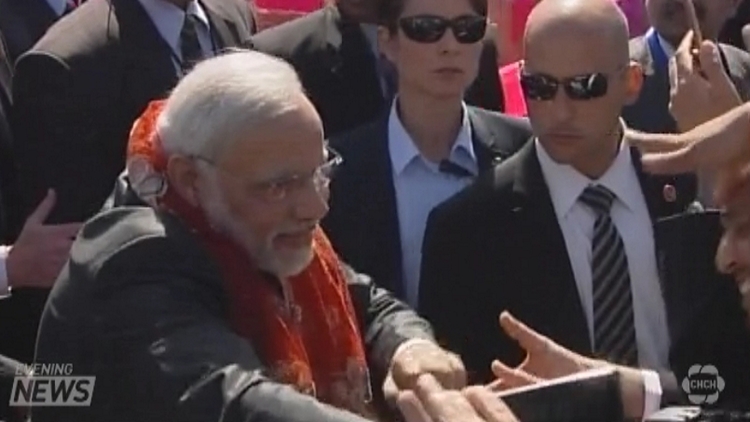
LATEST STORIES:


[projekktor id=’18502′]
There is a lot of attention tonight on an historic visit from India’s Prime Minister, and a multi-million dollar deal that will see a Canadian company supply uranium to India for the next five years for energy use.
The uranium deal is making international headlines, because it ends a dispute that lasted for decades, after India used Canadian technology to build a nuclear bomb in the 19070s. As a result, Canada banned uranium and nuclear exports to India, until now. This afternoon, Indian Prime Minister Narendra Modi landed at Pearson International airport with Prime Minister Stephen Harper. The pair was greeted by Bollywood dancers. Earlier in the day, the pair signed a number of bilateral agreements – including the uranium agreement, which will be used to fuel India’s power reactors.
Saskatoon-based Cameco signed the $350 million dollar deal that will see it supply seven million pounds of uranium to India. Canada is the second-largest producer of uranium in the world, while India is the fourth-largest energy consumer and it’s expected to triple its electricity supply over the next 25 years. Prime minister harper says Canada is also deepening its relationship with India on world security.
Narendra Modi swept to power in India in an upset election win about a year ago. Ever since, he’s received raucous receptions in international appearances, including a packed Madison Square Gardens last year, where the crowd chanted his name. Supporters think Modi will help India shine on the world stage, even though they worry about some dark moments in his history. Lisa Hepfner spoke to some local Indo-Canadians about what’s been dubbed “the Modi wave” or “Tsu-NaMo”.
Ricoh Coliseum doesn’t hold nearly enough seats for the number of people who want to see Narendra Modi. “I’m still calling everyone I know to see if I can source another ticket. I’m trying my best to be there. Modi’s more a rock star than a prime minister. People want to see him.” Amandeep Narula owns a banquet hall on Barton Street. She’s got a Sikh background, but it doesn’t bother her that Narendra Modi is Hindu. “I see myself being more Indian than Sikh. Even beyond that, I see myself as human. So whoever can bring that parity to India, we should forget the differences. Past is past. Lets move forward.”
Modi started life helping his father serve tea at a train station, but eventually became leader of the Gujarat Province. He brought 24-7 electricity, roads, infrastructure… and hope. There was also an uprising where thousands of Muslims died. “You can’t ignore that but if he can prove that it’s past…and he’s here to unite the country…”
Modi is here looking for knowledge as well as business deals. “He would like to have the traffic system we have here…he would like to know how we’re graduating our drivers licenses.”
He recently promised to address air pollution in the country – the worst in the world. His twitter account is very active, especially as he travels the world to drum up business – taking selfies with people like German Chancellor Angela Merkel.
“Fifty per cent of the population is under 25. 65 per cent below 35…800 million young people….they need jobs.” says McMaster Professor Rama Singh. It’s a contrast to the rest of the world’s aging population. He says Canada may be the most important foreign country for India, in part because it’s immigrants have been so successful here. “A success story…from Vancouver to Brampton.”
Modi goes to Vancouver and a Sikh temple after Toronto so he’s trying to ease those old cultural tensions it seems.